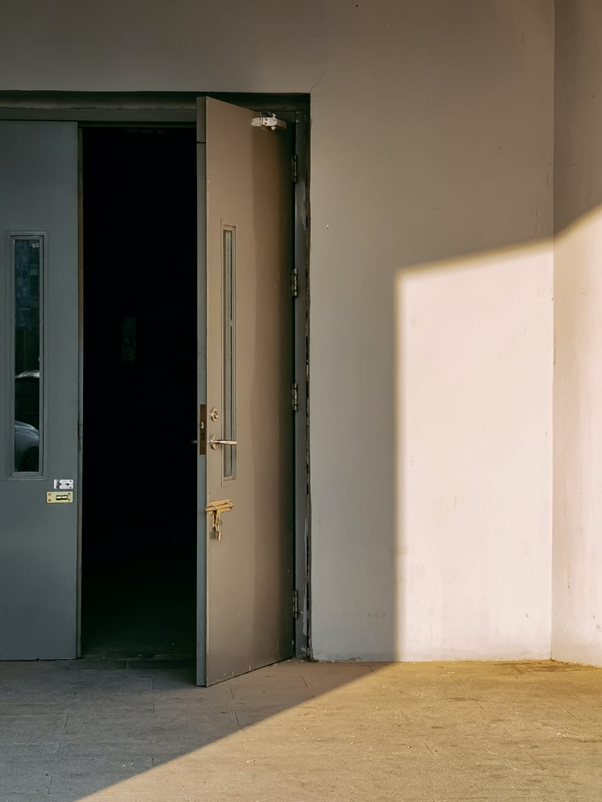
In the domain of architectural hardware and door automation, hydraulic door closers stand out as a silent but fundamental player, guaranteeing the consistent operation of doors in different settings. This device works on the standards of fluid dynamics to control the speed and power with which a door closes. This ingenious device has developed over the years, joining simplicity with effectiveness to turn into an essential component in private, business, and institutional spaces. These doors assume a basic part in our regular routines, giving access and security while serving as a barrier against external elements. In this article, we will dig into the inner workings, applications, benefits, and advancements of hydraulic door closers, unraveling the technology that quietly works with the smooth closing of doors.
The foundation of hydraulic door closers
Hydraulic driven door closers are mechanical gadgets intended to control the closing speed and power of a door. The essential parts incorporate a hydraulic cylinder filled with hydraulic fluid, a control valve, and a spring. The usefulness of the hydraulic-driven door closer can be best perceived by separating its activity into key stages.
The opening phase of the door is furnished with a hydraulic closer, when the door is opened the hydraulic cylinder is compressed. This pressure makes the fluid inside the chamber travel through the control valve, making a controlled resistance. Accordingly, the door opens without a hitch and with manageable power.
In the closing phase, as the door is released, the stored energy in the compressed fluid is released slowly. The control valve manages the progression of the fluid, guaranteeing a controlled closing speed. At the same time, the spring inside the door closer helps with pulling the door shut.
In the latching phase, the door is brought to a delicate close, and the latch draws in with the strike plate. This ensures that the doorway is safely closed and gives a feeling of completion to the closing cycle.
Types of hydraulic closers
Hydraulic door closers – These are accessible in various types to take special care of different door sizes, weights, and usage situations. The essential types are:
Surface-mounted closers- These are introduced on the outer layer of the door and are noticeable to consumers. They are flexible and can be utilized on an extensive variety of doorway types.
Concealed closers – These are hidden inside the door or door frame, giving an aesthetically satisfying appearance. They are in many cases utilized in high-end applications where a smoothed outlook is desired.
Floor-spring closers – These are introduced at the floor level, offering a concealed arrangement while giving the fundamental command over the door’s movement. They are generally utilized in commercial settings.
Diverse applications of hydraulic door closers
The versatility of hydraulic-driven door closers makes them reasonable for different utilizations, going from residential homes to huge business complexes. Here are a few key areas where hydraulic-powered closers track down broad usage. In homes, hydraulic-driven door closers are mostly installed on interior doors, giving comfort and keeping doors from closing. They add to a calmer and more controlled climate, particularly in families with kids. The requests of high-traffic regions in business spaces require the utilization of hydraulic-driven entryway closers. They are regularly tracked down in places of business, shopping centers, and cafés, guaranteeing that doors close flawlessly behind people entering or leaving. These hydraulic doors are being reckoned as the integral component in modern infrastructure.
Schools and colleges benefit from the establishment of hydraulic door closers, advancing a protected and organized climate. These closers assist with directing the progression of students through entryways, limiting disturbances. In medical care settings, where cleanliness and openness are fundamental, hydraulic closers are utilized to keep up with the integrity of controlled conditions. They help in the smooth activity of doorways in patient rooms, labs, and other critical regions. Hotels and hospitality foundations influence hydraulic closers to upgrade the guest experience. These gadgets add to an environment of refinement and comfort by guaranteeing doors are closing quietly and safely.
Advantages of hydraulic door closers
The widespread adoption of hydraulic-powered closers can be credited to the various benefits they offer. Here are a few key advantages that make them a favored decision in different settings. Hydraulic-driven door closers give exact command over the closing speed of a doorway. This component is critical in regions where slow and controlled closure is required, preventing mishaps and harm to the doorway. The closing force applied by hydraulic closers is adjustable, permitting customization based on the particular necessities of the door and the climate. This flexibility guarantees that the entryway works ideally in assorted settings.
One of the champion elements of hydraulic closers is their capacity to work with smooth and calm door activity. This is especially significant in spaces where sound decrease is vital, like libraries, workplaces, and neighborhoods. Hydraulic-driven door closers are known for their durability and maintenance necessities. Developed with excellent materials, they endure consistent utilization compromising on performance, resulting in long-lasting reliability. The controlled closing given by hydraulic door closers upgrades security by keeping entryways from forcefully closing. Likewise, these closers help with ensuring that entryways comply with accessibility guidelines, facilitating easy entry and exit.
Challenges and considerations in door closing systems
The hydraulic-powered door closers are generally durable, proper installation and regular maintenance are fundamental to guarantee ideal performance. Improper installation and maintenance can prompt glitches and a decline in productivity over the long run.
Contrasted with other door-closing systems, hydraulic closers can be generally more costly. Nonetheless, numerous clients track down that the advantages, including life span and flexibility, outweigh the initial cost.
Technological advancements in hydraulic closer design
As technology keeps on progressing, so design a plan for hydraulic entryway closers. Manufacturers are consolidating creative highlights to address specific necessities and difficulties. Here are a few remarkable headways in hydraulic-powered door closer innovation. With the appearance of smart building technologies, some hydraulic-powered closers currently come furnished with network highlights. This permits incorporation with building management frameworks, empowering remote checking and control of door operations. Certain hydraulic closers offer the choice of adjustable delayed closing. This component is especially helpful in high-traffic regions where doors need to stay open for stretched-out periods before leisurely closing to keep a smooth progression of people walking through.
In a period where energy effectiveness is a main concern, hydraulic closers are being planned considering sustainability. A few models consolidate energy-saving elements, for example, reduced opening resistance to minimize the effort expected to open doors. Recognizing the significance of cleanliness, particularly in medical services and public spaces, manufacturers are introducing hydraulic door closers with anti-bacterial coatings. These coatings inhibit the development of microscopic organisms on the outer surface of the closure. As architectural design advances, so does the interest in aesthetically pleasing door equipment. Current hydraulic closers are accessible in various finishes and designs, permitting them to flawlessly coordinate with the overall design of the space.
Conclusion
In the architectural building components and door automation, the hydraulic closers influence is unquestionable. It discreetly guarantees that doors work with accuracy, adding to the usefulness, safety, and style of the space. Hydraulic closers have developed complex bits of technology that take care of the different requirements of contemporary buildings. As technology continues propelling, we can anticipate that hydraulic-driven closers should turn out to be considerably more refined, integrating smart features, upgrading energy proficiency, and adding to the general maintainability of structures. However, amid these progressions, the center standards of controlled closing speed, adjustable power, and smooth activity will probably remain, setting the hydraulic door closers as a vital part of the world of architectural hardware.













